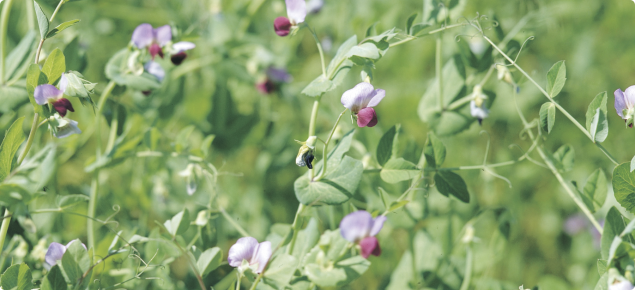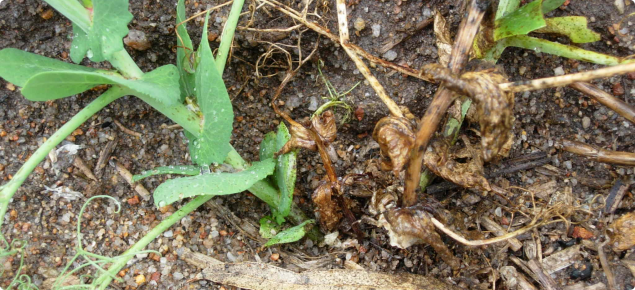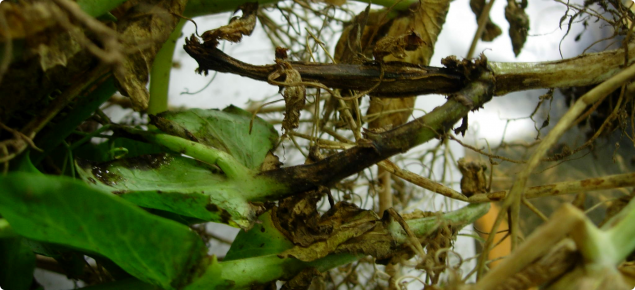Pea stubble from the previous season can harbour sexual ascopores from the fungus (D. pinodella).
Wind and rain can carry the sexual ascopores into the new season's crop and cause the establishment of an early infection.
Summer and autumn conditions determine the release of the spores. Field pea crops should be sown so that the majority of blackspot spores (approximately 60%) have been released prior to crop emergence.
Potential yield losses from blackspot can be avoided by:
- sowing field peas at least 500m from previous season's pea stubble
- sowing in paddocks where peas were grown in the last three years
- sowing crops after the majority of spores (60%) have been released, the disease severity can be reduced.
Blackspot manager is a model that predicts the maturity and release of spores using data weather data from the nearest weather station.
Where paddock rainfall is less than indicated by the nearest weather station, the probability of severe black spot may be higher. Predictions are based on the assumption that the location receives at least one rainfall event in excess of 3.5mm weekly.
To subscribe to the free blackspot SMS or email alert service, text 'blackspot', your name and nearest weather station to 0475 959 932 or email BlackspotManager@dpird.wa.gov.au.
Blackspot risk forecasts for 2023
New South Wales
South Australia
Victoria
Western Australia
Pages designed, developed and maintained on behalf of the Grains Research and Development Corporation and the Department of Primary Industries and Regional Developement's funded project Project DAW2112-002RT - Disease epidemiology, modelling and delivery of management decision support tools.




